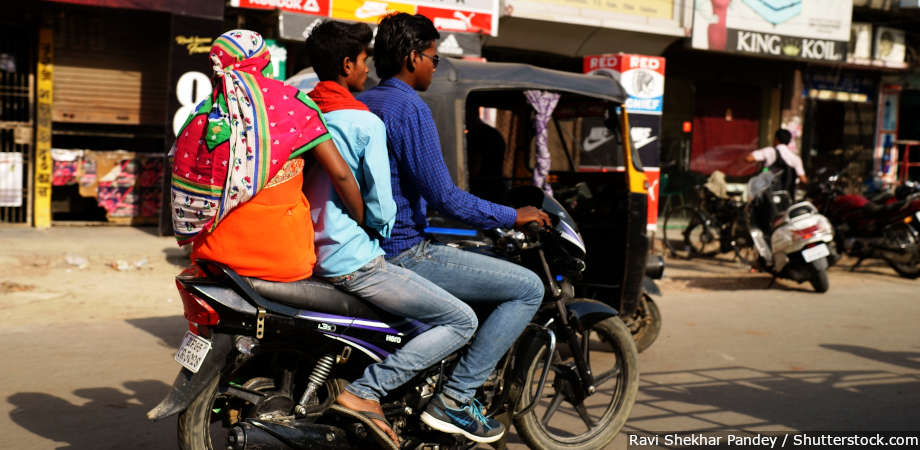Traffic Violations Caused 323 Deaths Every Day In 2017, Yet Fines Alone Not A Solution

Mumbai: Violation of traffic rules such as over-speeding, driving on the wrong side, drink driving, use of mobile phones and jumping a red light caused 80% (117,914) of all road accident deaths (147,913) in 2017, or 323 deaths every day, according to the transport ministry’s Road Accidents In India-2017 data, the latest available.
Penalties for violation of traffic rules have increased significantly since September 1, 2019, when the The Motor Vehicles (Amendment) Act, 2019, came into force.
The steep rise in traffic penalties has caused widespread debate across the country, with some states, including West Bengal, Madhya Pradesh, Rajasthan, Punjab, Jharkhand and Maharashtra--some of them ruled by the Bharatiya Janata Party that is in power at the Centre--refusing to implement stricter fines.
Maharashtra Transport Min,Diwakar Raote has written to Union Transport Minister,Nitin Gadkari stating,"the fines prescribed in the new Motor Vehicles Act have increased exorbitantly.Central govt is requested to reconsider&reduce the same by making suitable amendments in the Act." pic.twitter.com/TrBoD6JEni
— ANI (@ANI) September 11, 2019
The intention behind increasing the penalties was to “increase discipline among citizens”, said Nitin Gadkari, the Union transport minister, as India Today reported on September 12, 2019.
Union Minister Nitin Gadkari: Is it not the responsibility of the government to save lives of the people? That is the spirit behind this law. It is not the intention of the government to increase fines to get revenue for the government. https://t.co/HlOGDUwJOW
— ANI (@ANI) September 11, 2019
“Fines in isolation may not reduce road crash deaths, but severe fines combined with strong enforcement with other aspects of the law can be effective,” Piyush Tewari, founder, SaveLife Foundation, a “think-and-do-tank” on road safety, told FactChecker.in.
About 81% respondents in a perception survey carried out by the SaveLife Foundation in 2017 said that stricter penalties for traffic offences would help improve road safety. The survey that interviewed 2,166 people across 10 cities--including Bengaluru, Chennai, Mumbai and Kolkata--reported nine of 10 respondents saying they felt a strong road safety law would help reduce road crashes.
The new traffic penalties have come into effect from September 1, 2019. Violation of traffic rules such as over-speeding will now cost Rs 1,000 for a light motor vehicle and Rs 2,000 for a medium passenger vehicle, up 150%-400% from the previous Rs 400. Riding a two-wheeler without wearing a helmet and driving a car without fastening a seat-belt will now cost Rs 1,000, 10 times the earlier Rs 100.
Proposed Amendments in Various Penalties under Motor Vehicles (Amendment) Bill – 2019
— PIB India (@PIB_India) August 1, 2019
The Bill will provide an efficient, safe and corruption free transport system in the country: Union Minister @nitin_gadkari
Details here: https://t.co/bQ4MJA6rFO#MotorVehiclesBill pic.twitter.com/VjtpnNDFIR
“There is a misconception about the new law that it is only deals with penalties,” Tewari said. It is a comprehensive amendment, which addresses a wide range of aspects such as issuing of licenses, training, fixing accountability on road contractors and engineers for shoddy road construction and maintenance, child safety, road crash investigation and electronic enforcement to reduce corruption, in addition to increase in penalties, he added.
Overspeeding--major type of traffic violation--leads to 270 deaths every day
Overspeeding was the major traffic violation that accounted for 327,448 (70%) of road accidents and 98,613 (67%) of related deaths in 2017. “Driving on wrong side” was next, that led to 9,527 deaths, followed by “drunken driving/consumption of alcohol & drug” (4,776), use of mobile phone (3,172) and jumping red light (1,826). One in five deaths were attributed to “no violation” or causes “not known”.
Source: Road Accidents In India 2017
“Open areas, normally, would be expected to have a lower enforcement presence, thereby prone to dangerous driving and traffic rules violations,” the road accidents 2017 report stated. More than half (53%) the road accident deaths occurred in “open areas”, while more than a sixth (17.5%) happened in residential areas.
Not wearing helmets and seat belts
As many as 48,746 people were killed riding two-wheelers (which include motorcycles, scooters, mopeds and scooties) in road accidents in 2017, of which 74% or 35,975 were not wearing a helmet. Likewise, 26,896 people killed in road accidents did not fasten seatbelts--these included drivers as well as passengers.
“Safety devices such as helmets and seatbelts do not prevent accidents but are critical for averting fatal and grievous injuries in an event of road accidents,” the road accidents 2017 report said.
“Correct helmet use” can reduce the risk of fatal injuries by 42% and risk of head injuries by 69%, the World Health Organization’s Global Status Report On Road Safety 2018, said. “Wearing a seat-belt reduces the risk of death among drivers and front seat occupants by 45-50% and the risk of death and serious injuries among rear seat occupants by 25%.”
Here’s why Tamil Nadu reports most accidents
India reported 464,910 road accidents in 2017, of which 29% or 134,796 were fatal accidents. Road accidents and deaths in the country declined by 3% and 2%, respectively, in 2017 over 2016.
Tamil Nadu reported the most road accidents (65,562 or 14%) in 2017, while Uttar Pradesh--India’s most populous state--reported the most deaths (20,124 or 14%) from these accidents.
“Tamil Nadu has a very good road safety management systems in place, called the Road Accident Data Management System (RADMS),” Tewari said. They use RADMS to capture all different kinds of road crashes, which helps them systematically address the issue and reduce crashes.
“The state has made their district magistrates and collectors responsible for recording/reporting accidents. They implemented this change at a systemic level so every crash or death gets captured. This well established district-based system then comes up to the state level,” he said.
We welcome feedback. Please write to respond@indiaspend.org. We reserve the right to edit responses for language and grammar.


